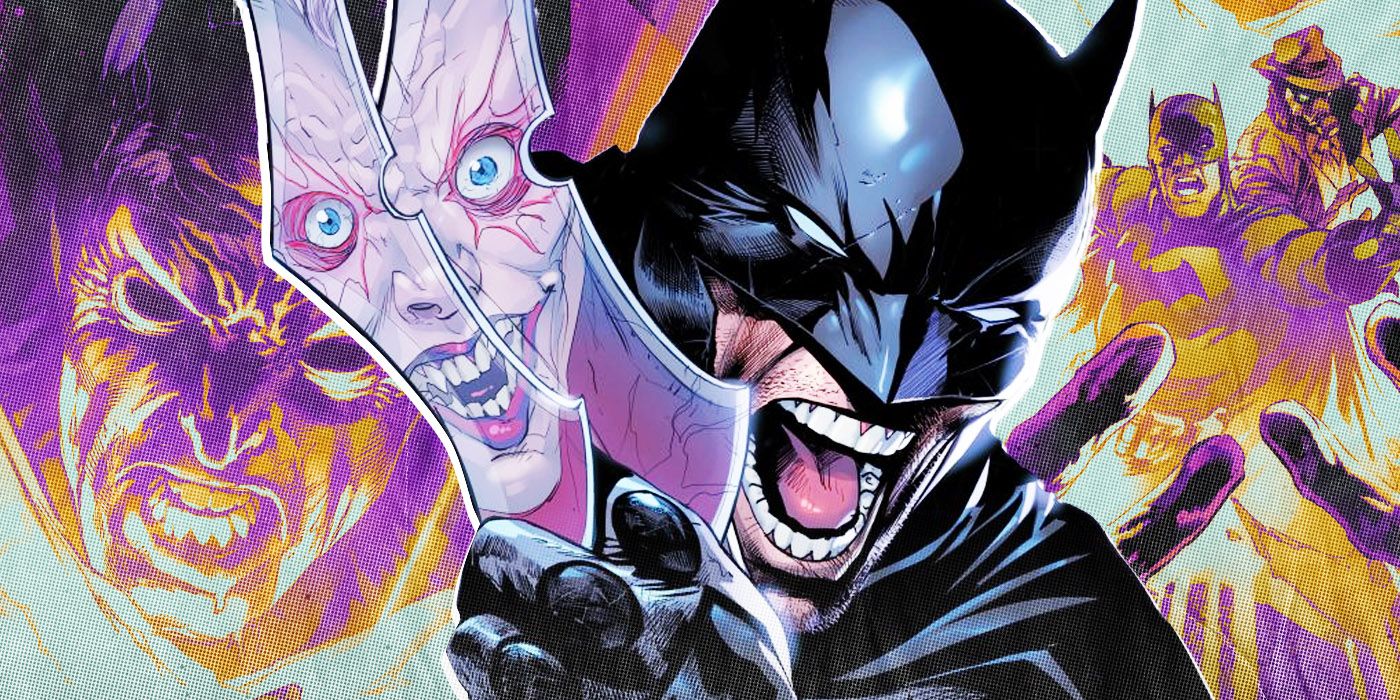Fans like to see heroes overcome insurmountable odds to win the day. As a result, comic books often indulge their audiences with high-stakes situations and action-packed adventures. However, for non-metahuman superheroes like Batman, who put themselves in the line of fire on a daily basis, the grueling physical altercations slowly take a toll on their minds and bodies. So, when the events of DC’s Knight Terrors finally wore down Batman to complete exhaustion, it really emphasized how even the Dark Knight is still essentially human.
Last week, DC concluded its two-month-long crossover event, Knight Terrors, helmed by architect Joshua Williamson, invading the length and breadth of the publisher’s ongoing titles. Knight Terrors depicts the rise of a new threat named Insomnia, who invades the dreams of heroes and villains in his quest to find the mystical Nightmare Stone. With the world’s champions in deep slumber, Deadman rises to the occasion and goes up against Insomnia’s nightmarish forces while possessing Dark Knight’s body. Longtime fans know Batman has kept his feet against much deadlier foes in the past. To understand why Batman was overwhelmed in the end, fans need to revisit what happened to him first.
RELATED: Knight Terrors: Deadman Is The Most Important DC Character You’ve Never Heard Of
Batman Was The Sacrificial Lamb In Deadman And Insomnia’s Fight
Coming hot off the heels of his multiversal journey, Batman finds himself in another bind when Insomnia, the self-proclaimed God of nightmares, invades the waking world. His influence not only reached beyond Gotham City but also sent people spiraling into their deepest, darkest nightmares, rendering them comatose in real life. Both heroes and villains succumbed to his Nightmare Wave like nothing that had come before it. Even Batman, who primarily operates at night and keeps himself awake using secret meditation techniques and sheer willpower, had to activate his emergency protocol ‘No Sleep Till Gotham’ as a last-ditch measure. Despite the adrenaline rushing through his heart, Batman still lost consciousness. While Batman has worked his whole life preparing for his worst fears, when he was confronted with Insomnia’s convoluted nightmare, his mind gave in to the pressure, and his body also shut down despite his best efforts.
This is where Boston Brand, better known by the moniker Deadman, entered the picture and took control of Batman’s body. While a major breach of privacy and bodily autonomy, Boston could not leave Batman lying around surrounded by Insomnia’s army of darkness. Immediately, he noticed his host’s peak physical form, confessing, “This is easily the most fit person I’ve ever possessed.” As a former circus aerialist, Deadman used his acrobatic skills to escape, made easy by his newfound body. Throughout the entire length of the arc, Deadman keeps possessing Batman. Running around with the freshly resurrected Wesley Dodds and fighting Insomnia’s terrifying knights, he puts every fiber in the Dark Knight’s muscles to good use. All along, Batman fights Insomnia to wrestle back control of his body, only to find Boston in the driver’s seat. While training and experience let Bruce handle it better than anyone else would, it was still more exhausting than any ordeal he’d ever faced.
RELATED: Knight Terrors Explores the Inherent Contradiction of Wonder Woman
Batman May Prepare For Every Emergency But He Is Still Human
No other DC character has changed more over time than Batman. The Dark Knight started his crimefighting journey as a dark avenger, becoming more family-friendly when Robin joined him in 1940, and turning to camp in the 1960s. However, the Caped Crusader found a lasting identity in the grounded stories of the ’70s. Writers have always portrayed Batman as a strong and capable superhero but since the days of Frank Miller’s Dark Knight Returns, he’s also become more stereotypically masculine. He became more stoic, pushed himself to the limits of his physical abilities, and harbored a deep distrust of his fellow superheroes. Over the years, he’s collected so many psychological scars that he’s developed contingency plans like backup personas and physical injuries to match. He was bound to pay the piper eventually.
The events of Knight Terrors wore down even Batman. While all the heroes were back on their feet once they vanquished Insomnia, Batman collapsed to the groundin a deep sleep. Mr. Terrific surmised that Deadman possessed Bruce for far too long and pushed his body beyond its limits, resulting in the latter’s emergency hospitalization. It’s a rare moment where Batman is more than just a scary symbol or a brooding gargoyle on DC’s rooftops. Here, he was a normal man pushed over the edge of exhaustion. People often have bad days, and almost everyone needs to sleep it off sometimes. Seeing Bruce hooked up to monitoring machines with Damian at his bedside was an emotional moment that humanized Batman and made him unusually sympathetic. In his most vulnerable state, Batman was also more relatable than he’d been in decades. Deep down, even the best superheroes are just made of flesh and bones.
RELATED: Knight Terrors Revived A Beloved Internet Meme To Explore Nightwing’s Psyche
A New Batman And A New Gotham
Batman finally woke up eight weeks later in Batman/Catwoman: The Gotham War: Battle Lines #1 (by Chip Zdarsky, Tini Howard, Mike Hawthorne, and Romulo Fajardo, Jr.). If this fiasco taught him anything, it’s that the years are catching up to him. Although he was asleep throughout Knight Terrors, his friends and family were deeply worried about him. While he was under Insomnia’s influence, Bruce met his younger self and took the opportunity to let him know that his loneliness would pass. Knowing that there are people who will keep Gotham safe in his absence, Batman gave himself to the warmth of a deep slumber once Insomnia was gone.
In the past, Batman has shown signs of toxic masculinity that has no place in today’s comics. However, DC has been working to change the Dark Knight’s grim nature, or at least make it more nuanced. He now openly appreciates Nightwing’s help and is proud of him. He apologizes to Tim for his rudeness and promises to do better. He finally reconciled with Damian after the two became estranged after Alfred’s death. Understanding one’s limitations and learning from them is also part of self-improvement and Batman may have learned an important lesson from his night terrors.
Batman survived DC Comics’ Knight Terrors thanks to Deadman and Wesley Dodds but his body paid the price. Did he learn anything from his downfall? Read More

